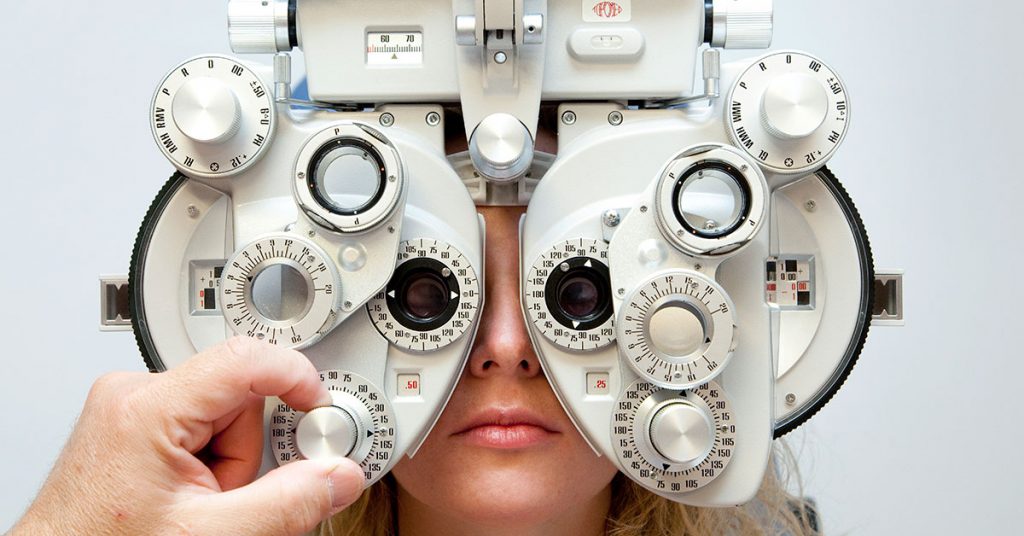Positive and negative visions are terms used in vision science to describe the relative brightness of different parts of an image.
Positive images (those with a higher brightness) are found near the center of the visual field, while negative images (with lower brightness) are found near the periphery.
This is why people with positive vision tend to see objects in the center of their visual field more clearly than those with negative vision, TheyaVue Buy Online.
Positive and negative visions are terms used in vision science to describe the relative brightness of different parts of an image.
Positive images (those with a higher brightness) are found near the center of the visual field, while negative images (with lower brightness) are found near the periphery.
OS and OD
Some of the first things you may notice when you view your eyeglasses prescription are the headings OS and OD.
Sometimes these will have a helpful label to convey their meaning, but if not, here’s what you need to know:
- OS is an abbreviation of oculus sinister, which is Latin for “left eye.”
- OD is an abbreviation of oculus Dexter, which is Latin for “right eye.”
- OU, an abbreviation of the Latin oculus uterque, which stands for “both eyes,” is occasionally used as well.
Since most people don’t understand Latin or know the abbreviations OS and OD, some optometrists will write “Right” or “RE” (right eye) and “Left” or “LE” (left eye) instead.
The information for the right eye is listed before the information for the left eye because when the optometrist is facing you, they read your eyes from left to right (which means your right eye comes first).
The Numbers
The numbers you see represent diopters, the units used to measure the correction of the lens (the focusing power) required by each of your eyes. Sometimes diopter is abbreviated to “D.”
On a glasses prescription, 0.00 (zero focusing power needed) represents good vision. Generally, the further away from zero you go (whether the number is positive or negative), the worse your eyesight and the greater the need for vision correction.
So +1.00 and -1.00 are quite modest; your eyesight isn’t too bad, as you only need 1 diopter of correction. On the other hand, +4.50 and -4.50 represent a greater lack of clarity; you’ll need a stronger prescription, at 4.5 diopters of correction.
Plus (+) and Minus (-)
So what’s up with the positive and negative numbers?
- A plus sign (+) in front of a number means you are farsighted (i.e., things up close are blurry).
- A negative sign (-) in front of a number means you are nearsighted (i.e., things far away are blurry).
Astigmatism
If you suffer from astigmatism, your cornea or lens is irregularly shaped, which causes blurred vision.
Your optometrist will measure your astigmatism to ensure that your prescription accounts for it. Typically, this is detailed with three numbers:
Spherical (S): This is the degree of nearsightedness or farsightedness measured in diopters, as described above. All prescriptions will include spherical information.
Cylinder (C): Like visual acuity, this is measured in diopters and can be positive or negative. It relays the degree of astigmatism.
The bigger the number, the more significant the astigmatism. If you don’t have astigmatism, this section will be left blank or won’t be included.
Axis: This is the orientation of the astigmatism, and it can be anywhere from 0 to 180 degrees (90 corresponds to the eye’s vertical meridian, and 180 corresponds to the eye’s horizontal meridian).
It shows where the curvature in the cornea or lens is taking place. If your prescription includes cylinder data, it will also include axis data, as both are needed for a prescription for someone with astigmatism.
Presbyopia
Most people begin to suffer from presbyopia (a loss of focusing ability) as they age. For example, they may have trouble reading the menu at a restaurant or text messages on a phone.
If you suffer from presbyopia, your optometrist may also include an “add,” which is the added magnifying power applied to the bottom of multifocal lenses to assist with presbyopia.
Prism
If your eyes are not aligned, your optometrist will also include a “prismatic power,” measured in prism diopters (p.d.), to compensate for the lack of alignment.
Only a small percentage of glasses prescriptions will include prism.
It’s measured in metric or fractional English units, and the direction of the prism is indicated in one of four ways relating to the position of the base: base up (BU), base down (BD), base in (BI), base out (BO).
Base in means toward the nose, while base out means toward the ear.
